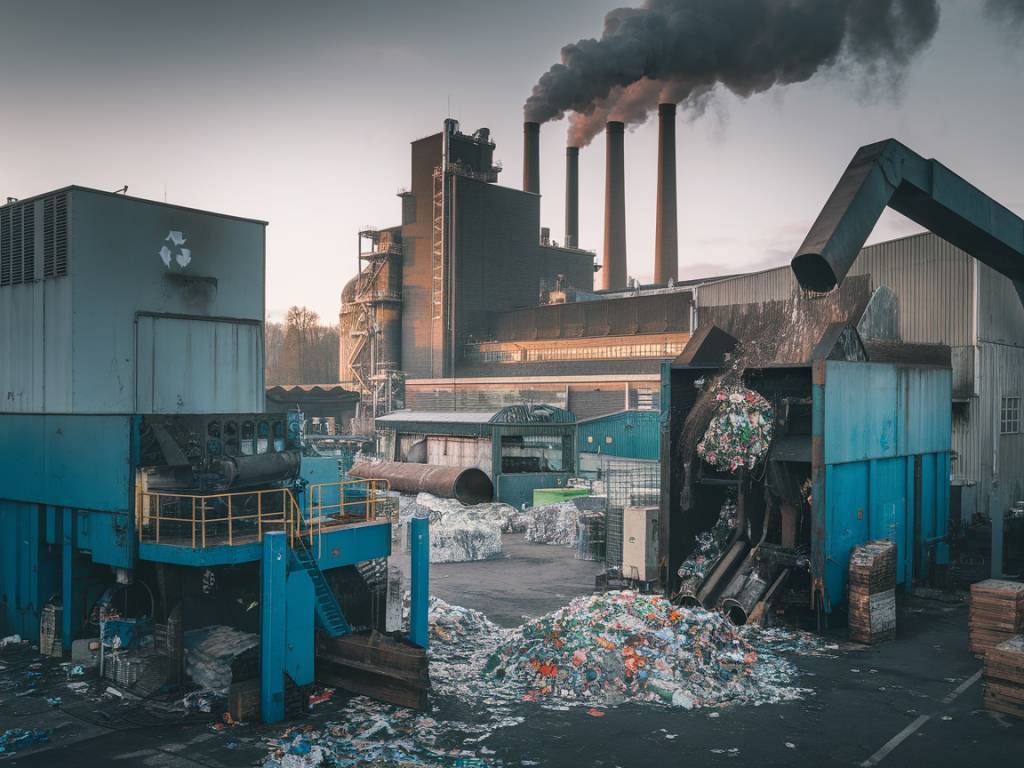What is Energy Recycling and Why Does It Matter?
In the ever-evolving quest for sustainability, energy recycling has emerged as a revolutionary concept in the field of energy efficiency. But what exactly is energy recycling? Simply put, it’s the process of capturing and repurposing waste energy—typically heat or electricity—that would otherwise be lost in industrial or everyday processes.
Picture this: you’re boiling water for tea, and steam escapes into the air. That wasted steam contains energy that could have been used for other purposes. On a larger scale, factories, power plants, and even urban centers release enormous amounts of excess energy into the environment every day. Energy recycling aims to harness this untapped potential, transforming losses into gains for both businesses and the planet.
It’s not just a fascinating concept—it’s a practical, impactful strategy that addresses two core sustainability goals: reducing energy waste and lowering greenhouse gas emissions. Let’s dive into how energy recycling is being implemented, and why it’s poised to become the next frontier in sustainability.
How Does Energy Recycling Work?
The essence of energy recycling lies in creative systems that capture and reuse excess energy. These systems vary depending on the type of energy being recycled, but some of the most common methods include:
- Cogeneration (or Combined Heat and Power, CHP): This technology captures the heat generated during electricity production and uses it to warm buildings, power industrial operations, or even generate additional electricity.
- Waste Heat Recovery Systems: These systems trap heat emitted by machinery or industrial processes, repurposing it for heating water, producing steam, or driving turbines.
- Electricity Regeneration: For instance, regenerative braking systems capture kinetic energy lost during braking in electric vehicles, converting it into electrical energy stored in the car’s battery.
These are just a few examples of how waste energy can be redirected, but the possibilities are immense. With the right infrastructure and technology, nearly every sector—industrial, commercial, and even residential—stands to benefit.
The Benefits of Energy Recycling
Energy recycling isn’t just a “nice-to-have” concept. It’s a game-changer for sustainability and energy efficiency, offering multifaceted benefits:
- Lower Carbon Footprint: By reusing energy that would have been wasted, we can reduce the reliance on fossil fuels, directly lowering greenhouse gas emissions.
- Cost Savings: Businesses and households can significantly cut their energy bills by tapping into recycled energy sources. It’s like finding free energy you didn’t realize you had!
- Improved Energy Security: Recycling energy locally reduces reliance on external energy supplies, making communities more self-sufficient and less vulnerable to energy shortages or price fluctuations.
- Enhanced System Efficiency: Energy recycling technologies ensure that every watt or BTU is used as effectively as possible, maximizing output while minimizing waste.
Energy recycling isn’t just an environmental solution—it’s an economic opportunity. As governments and industries increasingly prioritize sustainability, those who invest in energy recycling stand to gain a competitive edge in the market.
Energy Recycling in Action: Real-World Examples
To truly understand the transformative potential of energy recycling, let’s look at a few inspiring examples:
- The City That Converts Trash to Energy: In Sweden, waste-to-energy plants incinerate trash to produce heat and electricity, providing power to thousands of homes. The innovative approach is so efficient that the country imports waste from surrounding nations to fuel its energy needs!
- Heat Recovery in Steel Mills: Steel production is notoriously energy-intensive, but some mills are turning waste heat into valuable energy. For example, the HIsarna plant in the Netherlands captures exhaust gases to generate electricity, significantly cutting its carbon footprint.
- Regenerative Elevators: Buildings equipped with regenerative elevators are harvesting energy every time the elevator descends. That energy is then fed back into the building’s power grid, reducing overall energy consumption.
These examples showcase the versatility of energy recycling and its scale-up potential in various sectors. Whether in manufacturing, transportation, or urban infrastructure, opportunities for innovation abound.
Barriers to Adoption and How to Overcome Them
Despite its clear benefits, energy recycling isn’t yet as widespread as it could be. Why? There are a few key barriers:
- High Initial Costs: Installing energy recycling systems often requires significant upfront investment. However, financial incentives such as tax credits and subsidies are helping to offset these costs.
- Lack of Awareness: Many businesses and households simply aren’t aware of the potential savings and benefits of energy recycling. Raising awareness through education and case studies can drive adoption.
- Technological Complexity: Implementing energy recycling systems can be technically challenging, especially for older buildings or facilities. Partnering with experienced engineers and technology providers is key to overcoming this hurdle.
While challenges exist, they’re far from insurmountable. With continued innovation, policy support, and public awareness, energy recycling can become an integral part of our energy landscape.
The Road Ahead: Why Energy Recycling Is a Must
As the global population grows and energy demands rise, the need for sustainable energy solutions has never been more urgent. Energy recycling offers a compelling win-win scenario: it reduces waste, curbs emissions, and boosts efficiency—all while saving money.
Imagine a world where factories run on their own waste heat, buildings produce energy every time an elevator descends, and cities power themselves using trash. This isn’t a pie-in-the-sky vision—it’s the future that energy recycling can help us build.
Adopting energy recycling on a global scale will require commitment, innovation, and collaboration across industries. But as more pioneers embrace this approach, the momentum for widespread implementation will only grow.
The question isn’t whether energy recycling will play a role in the sustainable energy transition—it’s how quickly we’ll act to unlock its full potential. For businesses, governments, and individuals alike, the time to act is now. Together, we can turn wasted energy into a powerful force for good.
